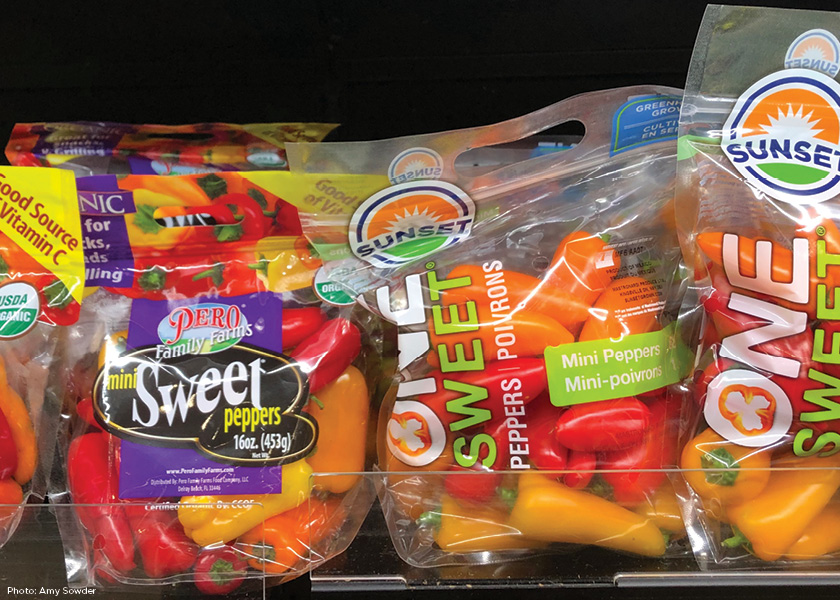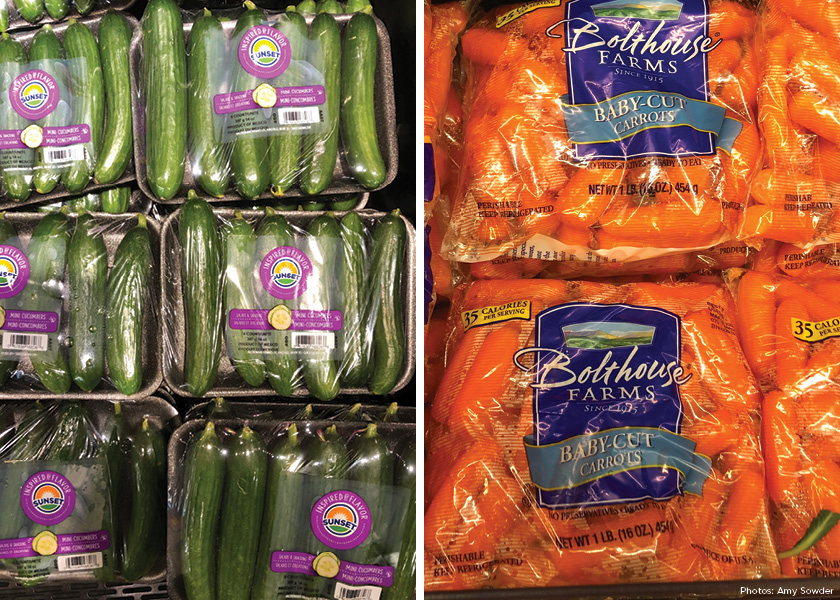Feeling snacky?

Name one vegetable ready for snacking in its original form.
Tomatoes don't count. Biologically, it's a fruit. Maybe you can munch on a whole, unpeeled carrot. But really, consumers want carrot sticks, "baby" carrots and carrot chips.
What else? Lettuce? Not really. Potatoes? Nope. Definitely not rutabaga. Maybe radishes. Some people like those little hot pink globes whole, dipped in cold butter and sea salt.
Unlike a lot of fruit, vegetables need preparation to be snackable. Value-added, convenience and fresh cut are critical to upping the snacking ante in the vegetable game.
Consumers crave convenient, snackable food, which is arguably what value-added produce can offer.
Almost half of shoppers frequently purchase convenient vegetable (45%) and fruit (48%) solutions, according to the 2022 Power of Produce report from FMI-The Food Industry Association. The report is conducted by 210 Analytics and sponsored by Yerecic Label, Invafresh and Southeast Produce Council.
“How do we pull the customer in to eat more produce as snack? That’s probably a hole for us to fill,” said Scott Bennett, produce sales and merchandising manager of Itasca, Ill.-based Jewel-Osco, part of Albertsons Cos.
In-store promotions and advertising in-store and on social media are effective methods for the snacking shopper, said Brian Dey, senior merchandiser at Four Seasons Produce, Ephrata, Pa., a full-service supplier of produce from the mid-Atlantic to New England regions.

The Specialty Food Association’s Trendspotter Panel for 2022 listed the “wide world of snacking” as its No. 3 growing trend, citing examples of snacks with global flavors that meet the consumer desire to take culinary adventures, whether or not they can travel.
Fresh produce can capitalize on this global-snacking trend by promoting less mainstream produce, describing its country of origin, the tasting attributes, and how to prepare and eat it. Make it fun, like a vacation to a new land.
The popularity of value-added produce means it’s now taking up 14.4% of total fresh produce sales in 2021, according to FMI. And the share of shoppers expecting to purchase more value-added produce remains high at 27%, while only 5% anticipate they will purchase less.
Related news: For families with young children, produce has to be appealing, accessible — and easy.
These solutions range from prewashed and precut to grab-and-go and ready-to-serve options.
Value-added fruit sales were up a whopping 27.3%, while nonvalue-added fruit climbed 4.4%, according to market research firm IRI. And in fresh vegetables, value-added gained 3.6%, while nonvalue-added declined 2.3%.
Transcending value of youth
People are growing produce differently to meet changing consumer eating habits and demand.
Enter the mini-me generation of produce: baby greens, micro greens, mini cucumbers, grape tomatoes, cherry tomatoes, baby carrots and mini sweet peppers are a few examples.
Lettuces and the like do not first come to mind for a snack, but Marc Oshima, chief marketing officer and co-founder of AeroFarms, Newark, N.J., is working to change that. His vertical ag-tech company’s expanding line of microgreens falls along its trademarked FlavorSpectrum.
“For snacking, we have been pushing leafy greens for a while, and people are literally just grabbing from the tray all day long,” Oshima said. “We have had some campaigns around ‘Watercress - The Next Popcorn,’ and we are developing some new campaigns for snackable microgreens.”
Perhaps dealing with the youngest produce of all is John Purcell, president and CEO of Unfold, in Davis, Calif., a seed company focusing on vertical farms.
Purcell wants to help vertical farms expand their product lines beyond leafy greens, and one way to do that is through smaller produce.

“The tomato has moved so dramatically towards snacking types,” he said. “We can use the power of the genetics we have access to, which has great flavor, great sensory (attributes), but now get it in a plant architecture that allows you to grow it at a more rapid rate. A smaller architecture allows you to really use the (farm) structures they have.”
Fresh produce is competing with center-store packaged goods for stomach share, so the easier retailers and suppliers can make it for the consumer to pop it in their mouth, the better.
“That's the best thing we can do to improve people's nutrition. I do think there's going to be more and more opportunities for us to think about that convenient side of things,” he said.
Purcell has watched this trend grow the last 12 of his 30 years in agriculture, and he expects it to expand into even more types of produce.
“It makes sense because lifestylewise, it's the way we eat now, right? If we can make it convenient for people, taste great and accessible, that’s a home run.”







